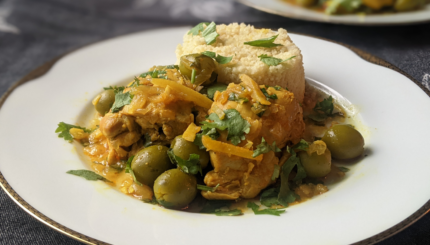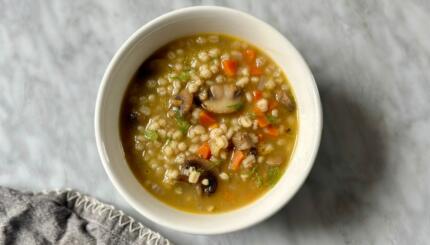At a Passover seder, families gather to retell the story of the holiday and share a meal. While traditions and celebrations vary, one piece that unites all seder celebrations is the existence of the seder plate.
You might have seen an image of one of these. They are usually round, and they have spaces carved out in which different food and food-related items are supposed to sit for the duration of the seder night. As a podcast professional, I’ve been thinking about the symbolism on the pate and how each of the stories behind the symbols might match up with an audio story (I always use family gatherings to let more people know that podcasts are the best).
So let me unveil a new kind of seder plate: the podcast seder plate.
Like all other seder plates, the podcast seder plate has its own rules, its own traditions, and its own mission.
Most traditional Ashkenazi (Eastern European-descended) seder plates have the following elements on them: an egg, horseradish, a shank bone, greens, bitter herbs, and charoset (a thick, sweet mix of apple and wine). The podcast seder plate is modeled after the above, with each podcast relating to the items and what they are meant to represent.
In the horseradish position is GastroPod’s “The Bitter Truth” episode. Horseradish is meant to represent the bitterness the Israelites faced as slaves in Egypt, which is just part of the story that we retell during Passover. So, let’s learn about the science behind tasting bitterness in food.
In the shank bone position is Ridiculous History’s “When Germany Sacrificed Sausage For War.” The shank bone represents the animal sacrifice that the Jewish people made when celebrating Passover in the days of yore. So, let’s learn about a more recent sacrifice.
In the charoset position (the sweet wine and apple mix) is TED Talks’ “Are We Running Out of Clean Water?” The charoset represents the bricks that the Israelites created when building during slavery, which took a lot of strength. So, let’s connect that to a current struggle for health and sanitary conditions.
In the bitter herbs position is Radiolab’s “Why Cry?” The bitter herbs are meant to represent the tears that the Israelites shed during the time of slavery and that generations of Jews shed during other times of oppression. So, let’s learn about where tears come from.
In the greens position is any episode from WBUR’s Kind World. The greens represent hope and renewal, since Passover takes place during the springtime. So, let’s hear some hopeful stories of kindness and humanity.
In the egg position is Good Grief’s “Father’s Day” episode. The egg represents mourning. So, let’s join a journey exploring grief by listening to a podcast where a young woman explores the grief she feels when she discovers that her long-estranged father has died.
The center of the seder plate is up for grabs. You can read about why some people add an orange, a tomato, and more. Since the center of the plate represents new traditions, breaking the mold, and feminism, let’s put women front and center here. In this vein, the center of the podcast seder plate is occupied by Stuff Mom Never Told You’s “Society, Sex and Women.”
We hope you have a wonderful Passover celebration with your traditional seder plate, as well as your newly minted Podcast Seder Plate.



